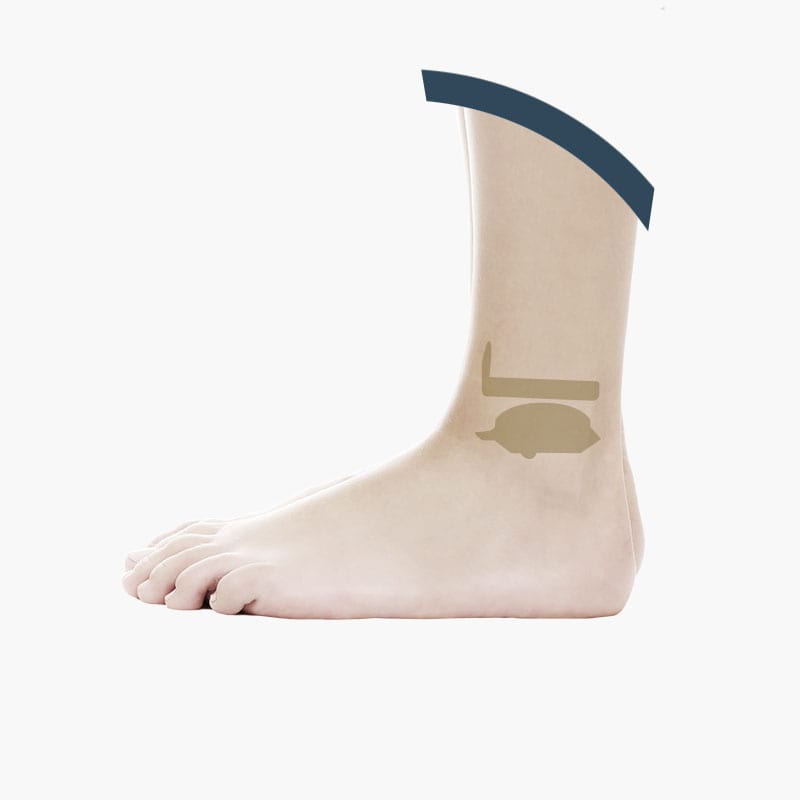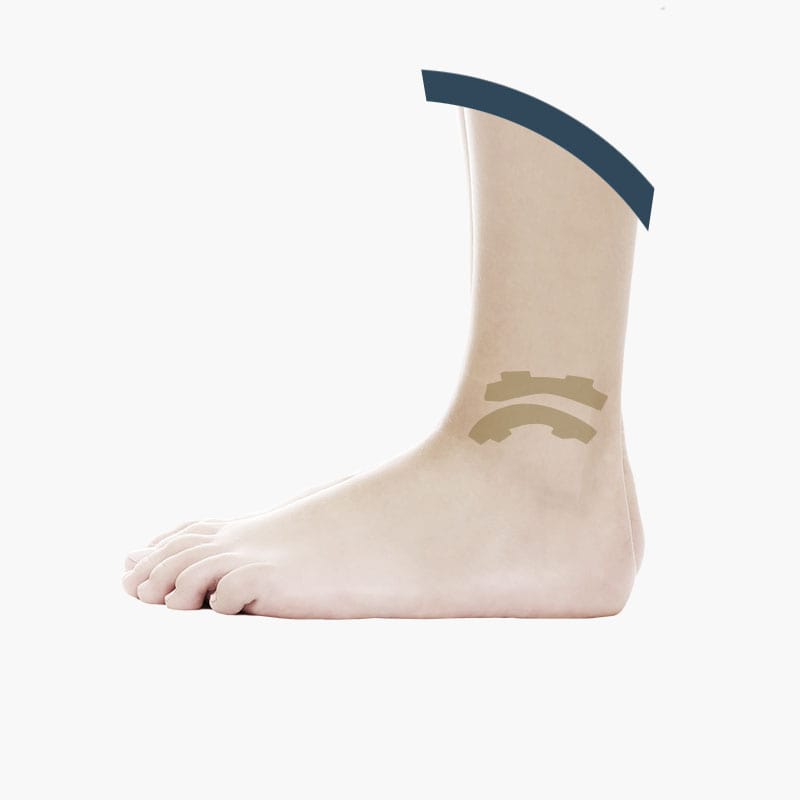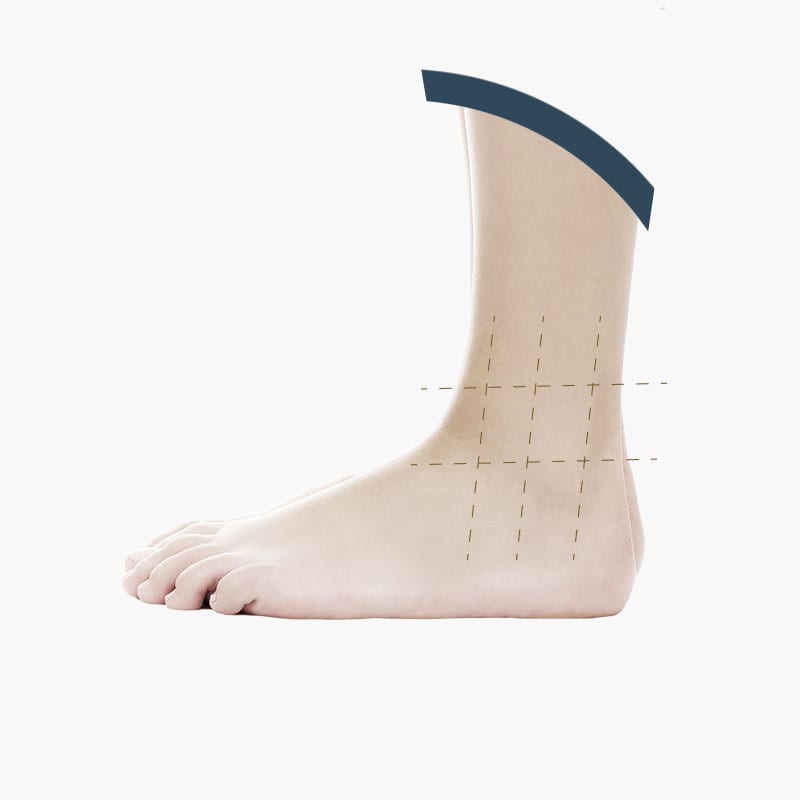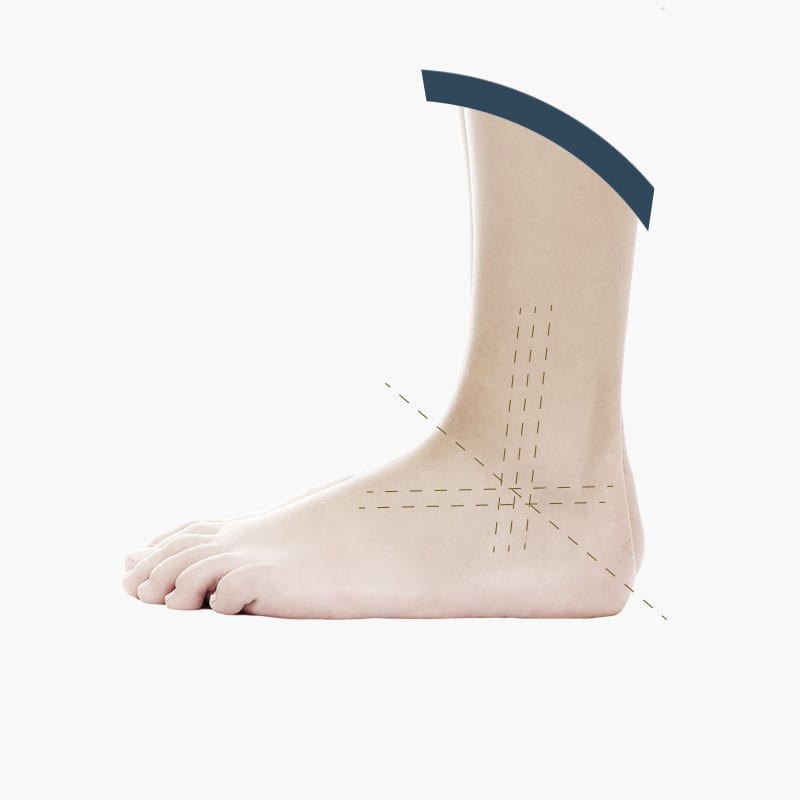Ankle Prosthesis
Ankle Prosthesis
Mobile Bearing
Ankle Prosthesis
Resurfacing
From Prosthesis to Prosthesis
Revisions Arthrodesis
From Arthrodesis to Prosthesis
Ankle arthroplasty is the solution for treating ankle arthritis.
Introduction
Ankle arthroplasty is currently the treatment of choice for ankle arthritis.
It is neither a novelty nor a surprise, but undoubtedly a recent acquisition.
Today’s reliability has gone through an evolution of prosthetic designs and a process of study and understanding of ankle biomechanics.
The first ankle prostheses in the ’70s were basically overturned hip prostheses, too simplistic a design to achieve stable, long-term results.
These early instances can be explained by the scientific enthusiasm of the time. Hip arthroplasty, in fact, has been a success since the beginning.
Today, WHO (World Health Organization) has defined hip replacement as “the most successful operation of the last century”.
The initial evolution of the prostheses has produced voluminous and constrained designs to respond to the risk of mobilization.
The key to modern success is the complete reworking of these principles over the past 10 years: successful prosthetic designs for the ankle must reduce bone resection and reproduce the original anatomy of the ankle in the most efficient way possible.
This is why we have focused on the characteristics of the ankle, because the ankle does not age!
It is a theme that I often face in the studio: despite standing up for a living, the ankle has such an efficient anatomy that it protects it from aging.
Arthritis is unlikely to develop in old age or for being overweight. It occurs in the presence of other factors, which actually fall outside the patient’s age:
- deformity (severe flat or hollow foot);
- a previous trauma (repeated fractures or ankle sprains);
- or systemic inflammatory diseases (for example, rheumatoid arthritis and lupus).
The ankle maintains efficiency over time because it is congruent: each surface matches the corresponding one. This must be recreated in a successful prosthetic design: an anatomical talus, a truncated cone shape (medial radius shorter than the lateral ray), and a preserved anterior tibial cortex.
When it comes to a prosthesis revision it is important to understand which type of prosthesis is to be revised.
First and second generation prostheses, when revised, require a surgeon’s commitment to fill in the bone defect that the removal of these bulky implants involves.
It is obviously different to revise a modern prosthetic implant that has preserved bone stock. The revision strategies will more easily allow a replacement of the prosthesis with another prosthesis, preserving, once again, the movement of the ankle.
TopNext
The Role of the Learning Curve in Surgery for the Implant’s Survival
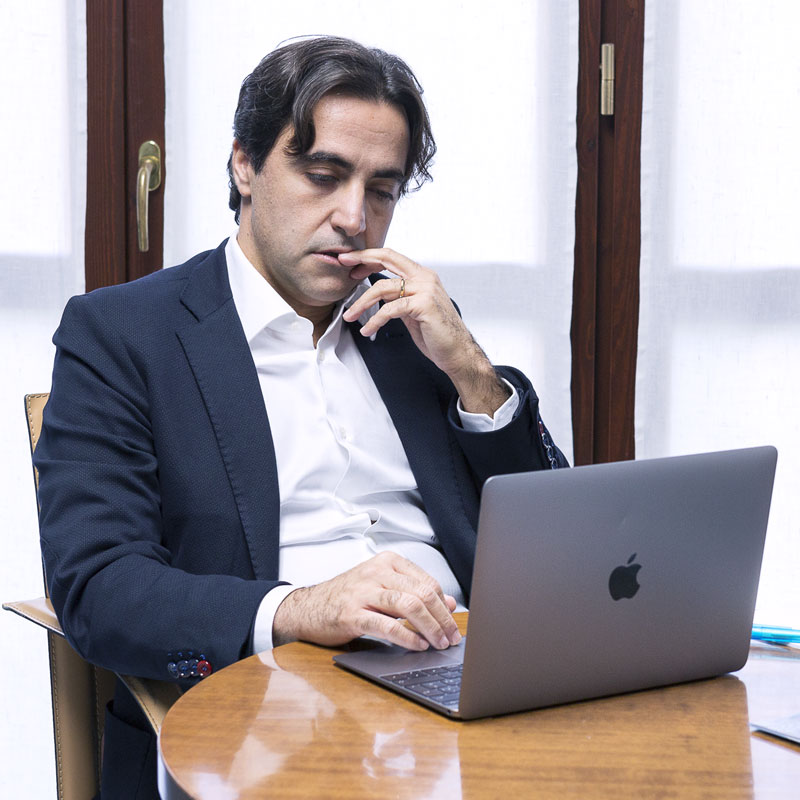
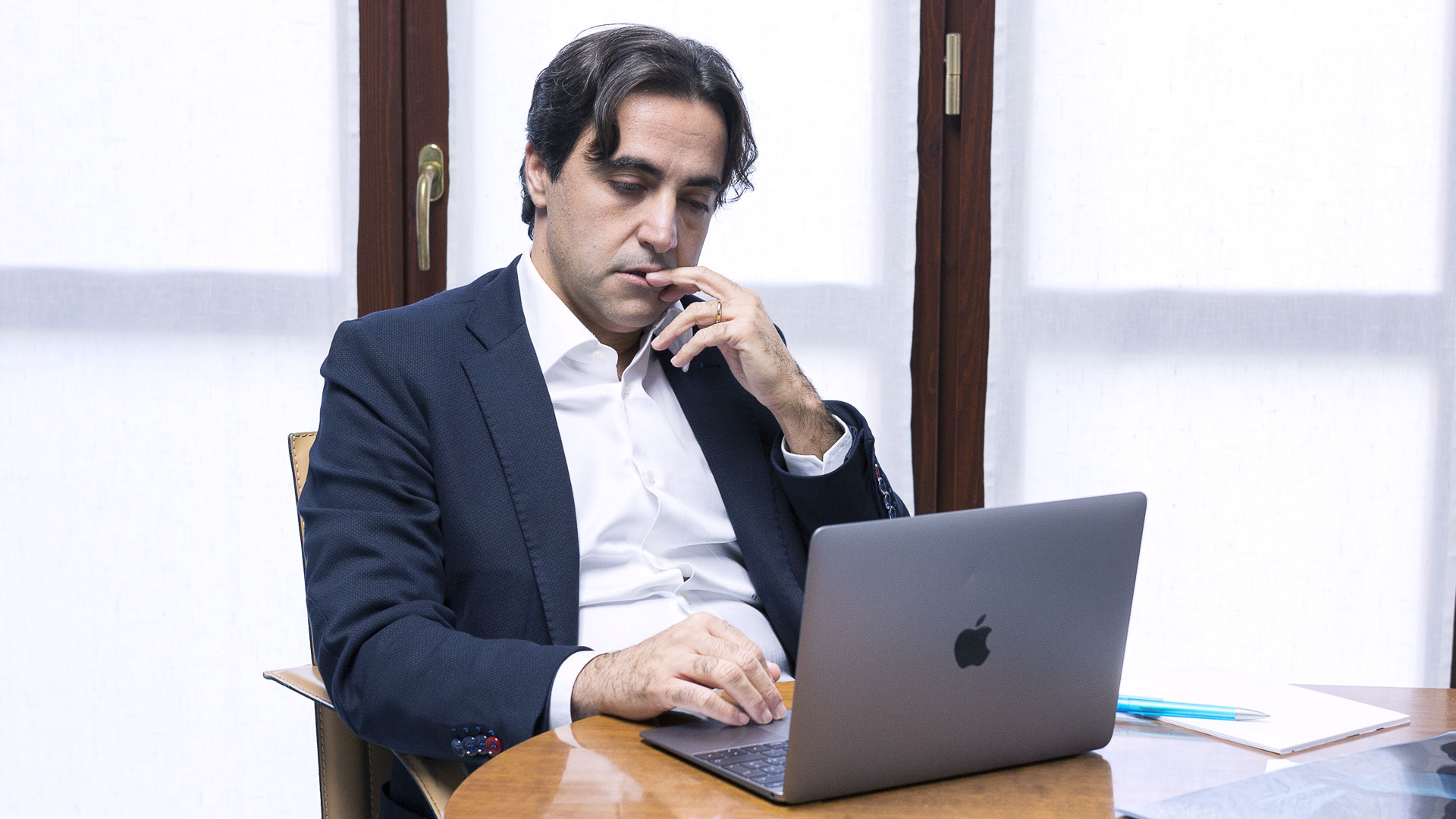
Prosthetic surgery, regardless of the anatomical district, benefits in large volumes.
It is universally accepted and demonstrated scientific acquisition that the reference centers, and, within them, the high volume work groups, have a central role in prosthetic surgery in the management of the first prosthetic implant, the revision of the prosthesis, and the formation of dedicated surgeons.
To substantiate this principle there are numerous scientific studies dedicated to learning-curves, i.e. the learning process after which the surgeon can be defined as fully reliable to perform a specific surgical method, in the specific case of the prosthetic implant.
In the field of ankle prosthesis and learning curves, my group, among the first in the world, has conducted and published several studies: “Identifying the learning curve for a total replacement using a mobile bearing prosthesis” (published in the European Journal of Chirurgia della Caviglia e del Piede: Foot and Ankle Surgery) and “Pearls and Pitfalls for a Surgeon New to Ankle Replacements” (published on Foot and Ankle Clinics).
With our studies we have identified, for the first time, a cut-off at which a surgeon dedicated to ankle prosthetic surgery can be defined as being at the end of his own learning curve.
According to our published data, a surgeon can be defined as an expert surgeon in the field after 30 cases.
The number of cases performed in general are not all that is important, but also the number of cases per year, which define the surgeon’s practice of prosthetic surgery.
In recent years the reference centers in Italy and in the world are dedicating themselves to the Institution of Prosthetic Registries, which collect the numbers of:
- surgeries performed;
- implanted prostheses;
- revision rate.
The data, however, can also prove sterile and difficult to interpret. This is a topic we recently discussed in one of our studies published in the journal of European Ankle and Foot Surgery.
To meet these modern needs, the Institute where i worked in for 10 years, for the first time, created a registry of prosthetic surgery IRCCS Galeazzi, in which, in addition to this data, objective data and assessment scales are collected (administered and acquired by the surgeon) as well as data from satisfaction and perception of the surgery acquired directly by the patient (PROMS).
The novelty and importance of this effort is all for the benefit of science and patients, motivated by the ideal of studying and understanding ankle arthritis and the role of ankle prosthesis.
From the beginning it has been a source of pride for me to be a member of the Board of this prosthetic register. I believe it is an ethically dutiful commitment to our patients of yesterday, today, and tomorrow.
Revision Strategies
A prosthesis may need revision in the event of complications or due to simple long-term use.
The revision of a prosthesis does not necessarily require its removal and the transition to arthrodesis (ankle fusion), as was previously thought.
It is possible to plan a revision of a prosthesis with another prosthesis, with the ideal to maintain the movement of the joint and to preserve the most physiological walk as possible.
There are different strategies when planning the revision of an ankle prosthesis with another prosthesis. The decision process must take into account the cause of failure and the amount of residual bone available, especially at the level of the talus (residual bone-stock).
TopNext
Causes of Failure
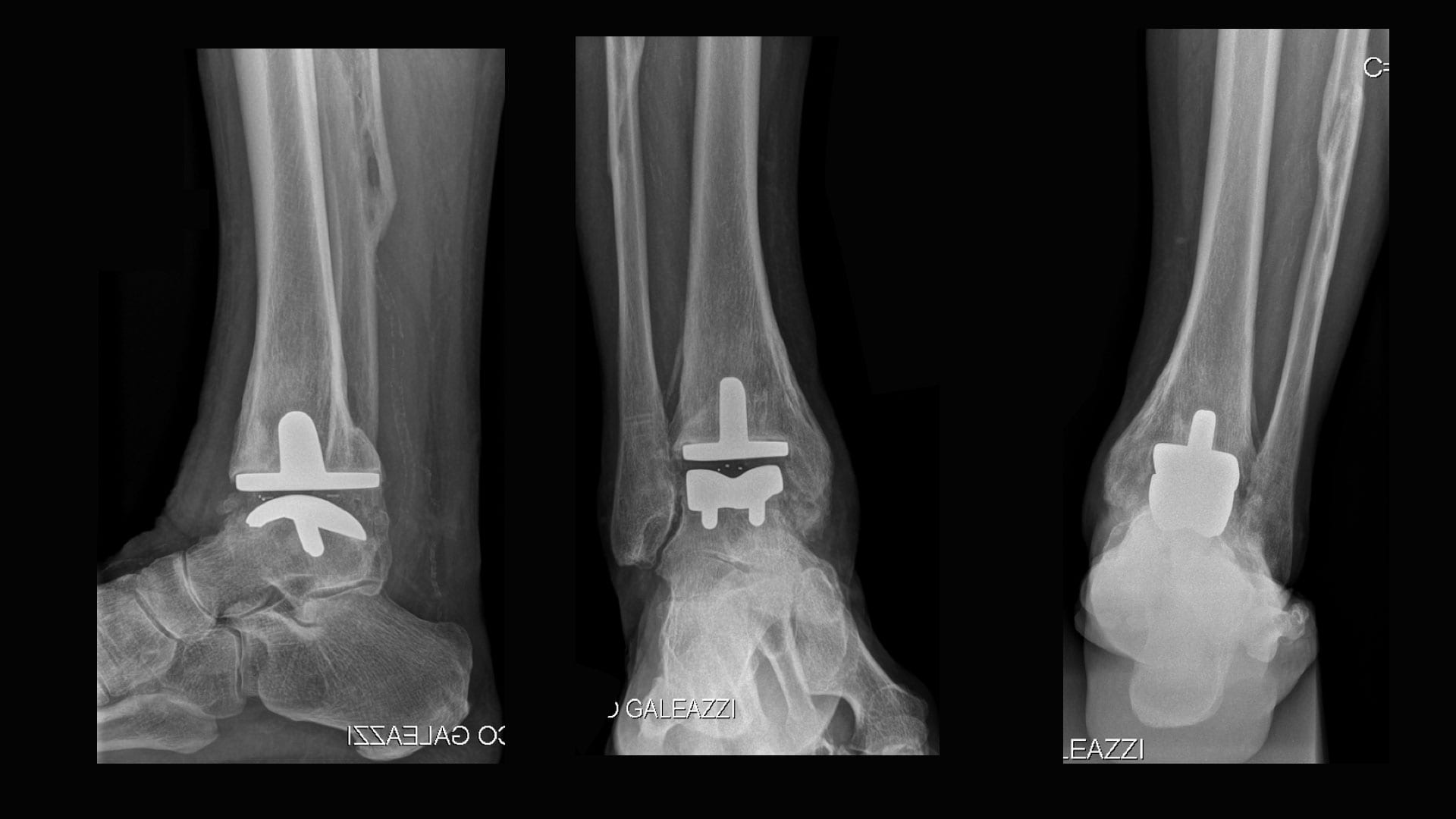
Painful prosthesis
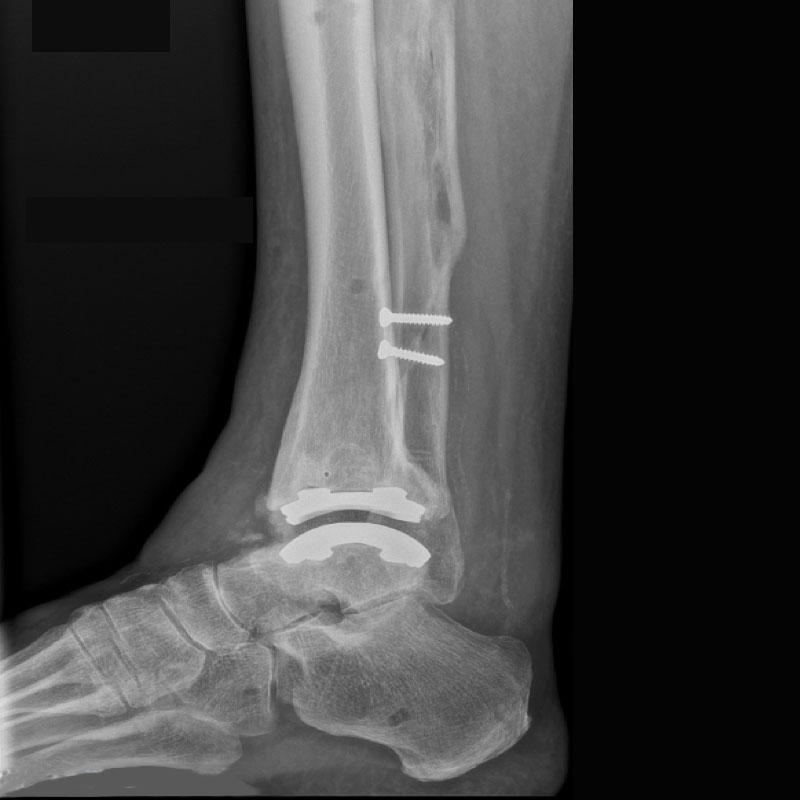
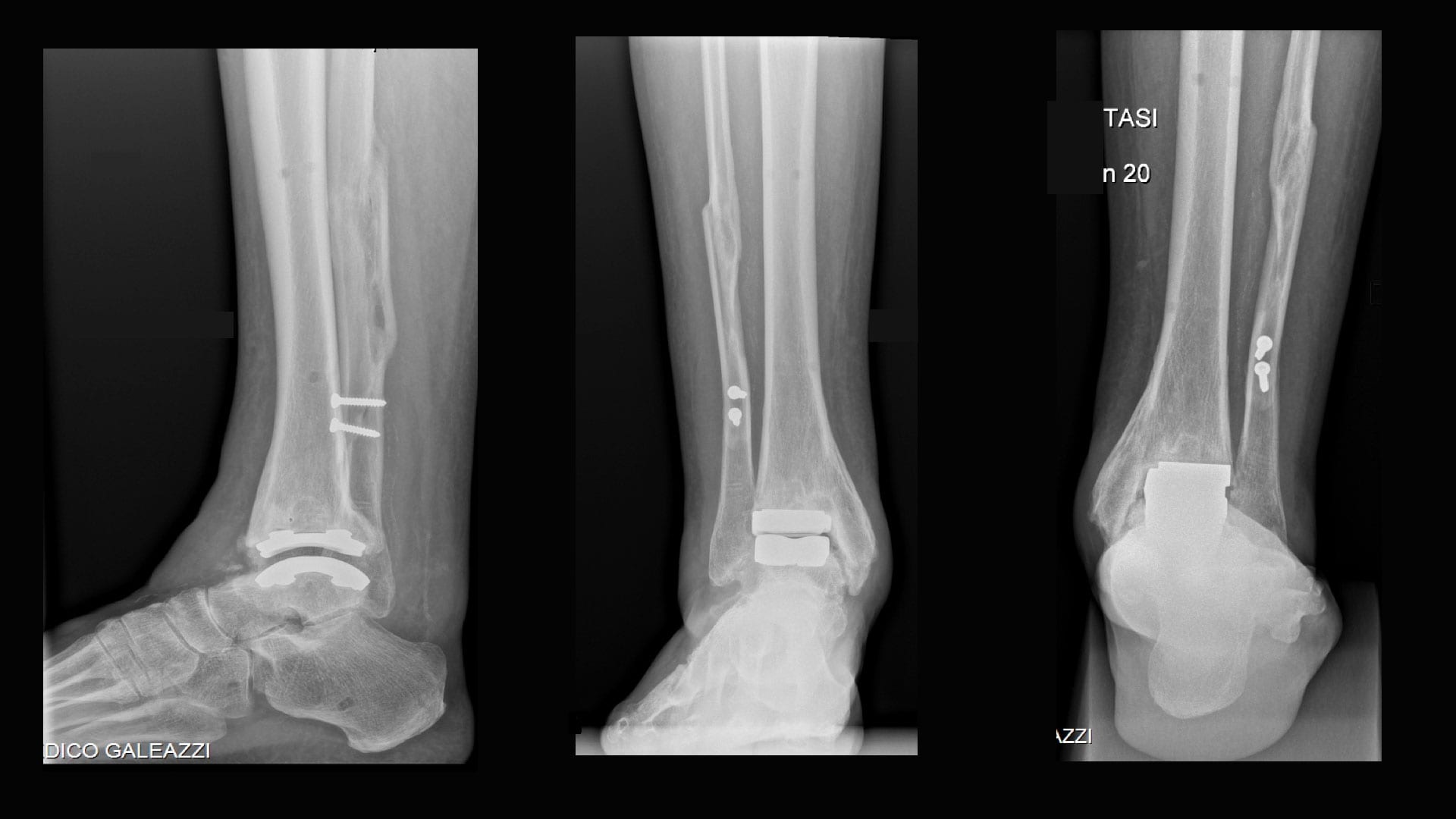
New prosthesis
The failure of an ankle replacement surgery can occur for several reasons, which can be summarized into three broad categories:
- prosthetic implant failure;
- implant mobilization and peri-prosthetic fractures;
- infection.
The complication of the infection has a history of its own and follows different protocols than the other two causes of failure. It is a topic we have spent much time on in our study to offer patients good alternatives.
Therefore, it is a subject we have published about, proposing our therapeutic strategy in one of our articles in the European journal of ankle and foot surgery: “Infections in primary total ankle replacement: Anterior approach versus lateral transfibular approach”.
Treatment happens by healing the infection.
In the case of acute infection (within the first 6 months of surgery), the first surgical procedure may be scheduled as well as a subsequent specific combined antibiotic therapy for a period which generally ranges from 2 to 3 months.
In the case in which the infection is chronic (over 6 months), or the treatment described above has not given results, the normal procedure consists of a prosthesis removal operation substituted with a spacer implant (in antibiotic cement).
It is usually possible to put weight on this spacer within a month from the surgery. If the patient is satisfied, he can keep it in place throughout his life. If the patient is declared as recovered from the infection, but has pain, it is possible and advisable to schedule a revision procedure.
Once the clinical cure has been reached, and if the bone-stock (residual bone) allows it, it will be possible to proceed with the implantation of a new prosthesis.
In the case in which the cause of the failure is one of the first two listed, it is possible to identify two different revision strategies, based on the talus’ residual bone-stock.
If the quantity of healthy bone at talus level is sufficient, it is advisable to review the failed prosthesis with another “first implant” prosthesis, avoiding the use of a revision implant.
The advantage is saving bone, reducing the invasiveness of the procedure and leaving the possibility of a second revision open in the future, if necessary.
In these cases, the lateral approach represents a great advantage because it allows the surgeon to have a wider and more direct vision on the joint, avoiding previous scars and deep adhesions and allowing a removal of the first implant and a revision in biological economy, i.e. saving the largest amount of bone possible.
In the case that the residual bone-stock is not sufficient, there are revision systems today that offer great possibilities. In fact, it is possible to replace the talus as a whole (talus prostheses and custom-made prostheses).
They are steps forward offered by technology in every field. Three-dimensional printers and vision systems can create instruments dedicated to the pathology or skeletal defect of the individual patient.
TopNext
My Team and Research: What we have Introduced
My team has always worked on two key aspects in the field of revision: study and solution of infections and the acquisition of data and its interpretation on learning-curves in prosthetic surgery.
Our scientific output has allowed us to identify cut-offs, i.e. clear and measurable numbers and boundaries during the surgeon’s growth path.
We believe this is an incentive for reference centers and teams dedicated to the treatment of ankle arthritis to continue optimizing and improving its treatment.
For this I personally contributed to the foundation of the Register of Ankle Prosthetic Surgery at IRCCS Galeazzi where i worked in before i became the chief of foot and ankle orhopaedics in Humanitas San Pio X, to whose development I enthusiastically play a part in as a Board member.
It is a national registry that aims to acquire clinical data collected by the surgeon, which is joined for the first time with the patient’s direct perception.
We think that the development of this registry, with peculiar characteristics compared to the past, is the key to future interpretation of the success of the first implant and the revision prosthetic surgery.
Our scientific activity follows this direction and we have already published one of our studies on the role that prosthetic records have today. We discuss how to implement them to make them really useful for the evolution of prosthetic surgery.
Scientific publications:
- Identifying the learning curve for a complete replacement using a mobile bearing prosthesis
- Pearls and Pitfalls for a Surgeon New to Ankle Replacements
- Total ankle arthroplasty and national registers: What is the impact on scientific production?
- Infections in primary total ankle replacement: Anterior approach versus lateral transfibular approach.
